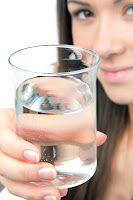Concerned,
New Jersey
Thanks for contacting us. We would recommend you have your water tested for coliform bacteria, to see if there is contamination. If your well is properly constructed and more than 100 feet deep, it might not have been affected by the flood waters. However, it is best to be safe and have the water tested before using it.
Here is some more information on well water, bacteria and how to sanitize wells:
Anyone relying on their own private well water or spring water source should learn about bacteria and parasites in water and how to prevent them.
If your well is covered with water during a flood you can be at risk for contamination. If your well is shallow water can leak in through a cracked well seal from the surface, you can be at risk for bacteria and parasites in the water.
Perhaps your well is near a river or creek and water can penetrate the well directly from the nearby water stream. If your water source is any type of surface water such as creeks, springs, ponds or rivers you should consider that your water may at times contain parasites.
Shock chlorination can eliminate the disease-causing bacteria, and other nuisance organisms that cause tastes, odors and slime.
Shock chlorination of the well and/or pumping, distribution or home piping system is recommended after:
• A new well has been constructed
• Any time a well is opened for repairs
• Floodwater has entered a well
• A new holding tank, pump or pressure tank has been installed
• A new pipeline or other piping or plumbing work has been done
• Tests indicate the presence of coliform bacteria
• Odors or slime caused by iron or sulfur bacteria are present
CAUTION: It is important to remember, while shock chlorination corrects immediate bacteria and/or odor problems in wells and piping systems, it does not correct the source of the bacteria. If bacteria are entering the well from a septic tank or other source, one should correct the problem, otherwise bacteria will redevelop.
How Shock Chlorination Works
 Shock chlorination involves introducing a strong chlorine solution into the water source and plumbing system, and letting it disinfect the system for 12 to 24 hours. You can use regular household bleach (non-perfumed type) that contains 5.25 percent sodium hypochlorite, which kills bacteria and certain viruses. You can also use pool chlorine, which is 10% to 12% sodium hypochlorite and twice as strong as household bleach, and/or calcium hypochlorite pellets. For best results don't use pool dry pellets, unless it is calcium hypochlorite.
Shock chlorination involves introducing a strong chlorine solution into the water source and plumbing system, and letting it disinfect the system for 12 to 24 hours. You can use regular household bleach (non-perfumed type) that contains 5.25 percent sodium hypochlorite, which kills bacteria and certain viruses. You can also use pool chlorine, which is 10% to 12% sodium hypochlorite and twice as strong as household bleach, and/or calcium hypochlorite pellets. For best results don't use pool dry pellets, unless it is calcium hypochlorite.Read a Step By Step procedure for disinfecting your well water with shock chlorination.
If your well is covered by water during a flood, read our report on flood waters and your well.


